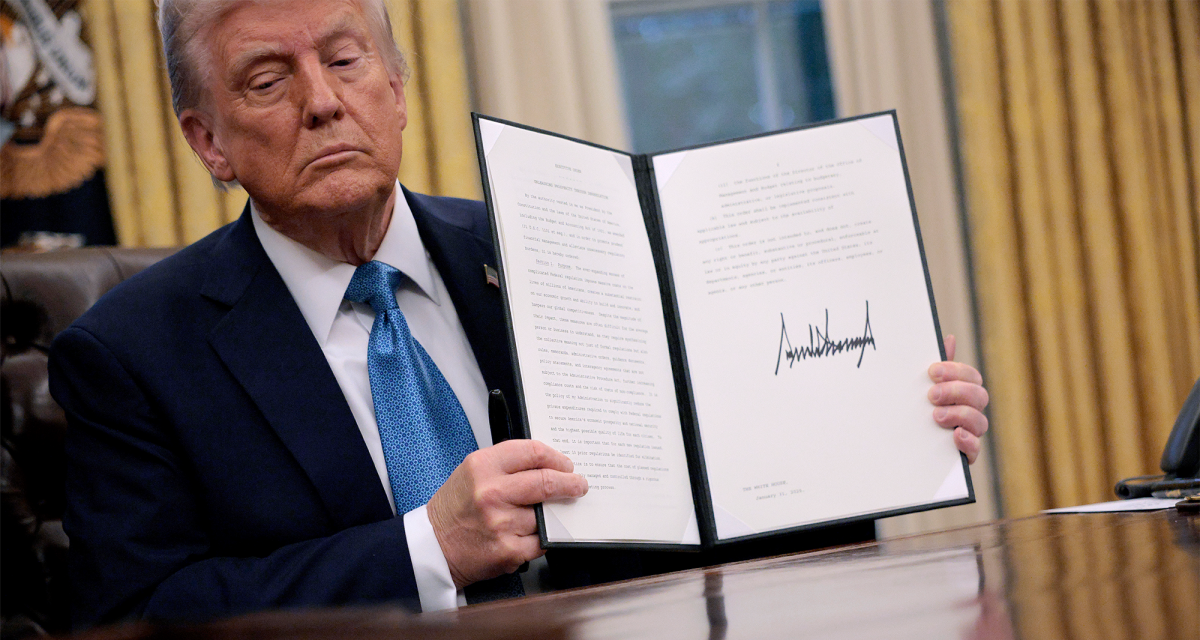Trump Vs. Europe: Deconstructing The Trade Tensions

Table of Contents
The Trump Administration's Trade Policies: A Protectionist Approach
The core tenet of the Trump administration's "America First" trade policy was a pronounced shift towards protectionism. This approach prioritized American industries, often at the expense of international trade agreements and established relationships. A key instrument in this strategy was the imposition of tariffs, hefty import duties designed to make foreign goods more expensive and thus less competitive in the American market.
- Specific examples of tariffs imposed on European goods: Significant tariffs were levied on European steel and aluminum, sparking immediate retaliatory measures. Other sectors faced targeted tariffs, depending on the administration's assessment of unfair trade practices.
- Impact of these tariffs on European industries and consumers: These tariffs disrupted supply chains, raised prices for consumers, and negatively impacted European businesses reliant on the US market. Industries like steel and aluminum suffered particularly heavily.
- The rationale behind the administration's protectionist stance: The administration argued these measures were necessary to protect American jobs and industries from unfair competition, claiming that previous trade agreements had been detrimental to the US economy and its manufacturing sector. This protectionist stance emphasized "American manufacturing" as a priority. The rhetoric often framed these trade actions as a necessary correction to decades of unbalanced trade practices.
This protectionist approach, often referred to as engaging in "trade wars," significantly escalated tensions with Europe and other trading partners.
European Union's Response to Trump's Trade Actions
Faced with escalating tariffs, the European Union responded with a mixture of countermeasures and diplomatic efforts. The EU's response aimed to defend its own industries and uphold the rules-based international trading system.
- Retaliatory tariffs imposed by the EU: The EU retaliated with its own tariffs on a range of American goods, mirroring the US approach and targeting sectors significant to the US economy. These retaliatory tariffs became a major element of the trade war.
- Efforts by the EU to resolve trade disputes through WTO channels: The EU attempted to resolve these disputes through the World Trade Organization (WTO), emphasizing the importance of multilateral trade agreements and adherence to international rules. However, the WTO's effectiveness was hampered by political gridlock and challenges in enforcing decisions.
- The EU's focus on multilateral trade agreements: The EU reaffirmed its commitment to a rules-based, multilateral trading system, contrasting sharply with the Trump administration's unilateral approach. This divergence in approach further exacerbated the trade tensions.
The EU's response underscored its commitment to a free trade system and its determination to resist protectionist measures, even while engaging in trade negotiations to find common ground.
Underlying Causes of the Trade Disputes Beyond Tariffs
While tariffs were a prominent feature, the Trump vs. Europe trade tensions stemmed from deeper issues beyond simple import duties. Underlying geopolitical and economic rivalries played a significant role.
- Concerns about intellectual property rights: Disagreements over the protection of intellectual property rights, particularly in areas like pharmaceuticals and technology, contributed to the escalating tensions.
- Disputes over subsidies and state aid: Differences in views on acceptable levels of government subsidies and state aid for industries further fueled the conflict. The US accused the EU of providing unfair advantages to certain companies.
- Differences in regulatory standards and approaches: Conflicting regulatory standards and approaches to issues like data privacy and environmental protection added another layer of complexity to the trade relationship.
- Competition for global market share: Underlying economic competition for global market share, especially in high-tech sectors, intensified the rivalry between the US and the EU, adding another dimension to the trade disputes.
These underlying issues highlighted the complex interplay of economic and geopolitical factors at play in shaping the "Trump vs. Europe trade tensions."
Long-Term Impacts and Future of Transatlantic Trade Relations
The "Trump vs. Europe trade tensions" left a lasting mark on the global economy and the transatlantic relationship. The long-term consequences are still unfolding.
- Impact on global supply chains: The trade disputes disrupted global supply chains, leading to increased costs and uncertainty for businesses worldwide. The reliance on complex, interconnected supply chains was exposed as a vulnerability.
- Effects on economic growth in Europe and the US: The trade war undoubtedly dampened economic growth in both the US and Europe, although the precise extent remains a subject of ongoing economic analysis.
- Changes in trade patterns and relationships: The tensions led to shifts in trade patterns, with some businesses diversifying their supply chains and seeking alternative markets. Trust and cooperation within the transatlantic relationship were also significantly impacted.
- Potential for future trade agreements: While the future of transatlantic trade remains uncertain, the experience of the Trump era highlights the need for a renewed focus on strengthening the rules-based trading system and addressing the underlying causes of trade disputes. The potential for future bilateral trade agreements or a strengthened multilateral approach will shape the future relationship.
Conclusion: Assessing the Legacy of Trump vs. Europe Trade Tensions
The "Trump vs. Europe trade tensions" represent a significant chapter in the history of transatlantic relations and global trade. The imposition of tariffs, retaliatory measures, and underlying geopolitical rivalries significantly impacted global supply chains, economic growth, and the overall trust between the US and Europe. The long-term consequences will continue to shape the economic and political landscape for years to come. Understanding the intricacies of these trade tensions is crucial for navigating the complexities of international trade and the future of global economic cooperation. To continue learning about the ramifications of the "Trump vs. Europe trade tensions" and their ongoing implications for global economics and politics, explore resources from the World Trade Organization, think tanks specializing in international trade, and reputable news organizations covering international affairs. The legacy of these trade tensions demands further study and informed discussion.

Featured Posts
-
 Guerre Au Piratage Iptv Rtbf Et Rtl Defendent Leurs Droits D Auteur
May 26, 2025
Guerre Au Piratage Iptv Rtbf Et Rtl Defendent Leurs Droits D Auteur
May 26, 2025 -
 Baffie Et Ardisson Polemique Sur Les Blagues Sexistes A La Television
May 26, 2025
Baffie Et Ardisson Polemique Sur Les Blagues Sexistes A La Television
May 26, 2025 -
 Jenson And The Fw 22 Extended Collection Details And Release Date
May 26, 2025
Jenson And The Fw 22 Extended Collection Details And Release Date
May 26, 2025 -
 How To Watch The Monaco Grand Prix 2025 Timing Streaming And More
May 26, 2025
How To Watch The Monaco Grand Prix 2025 Timing Streaming And More
May 26, 2025 -
 Bayern Munichs Neuer Suffers Injury Setback Doubtful For Crucial Matches
May 26, 2025
Bayern Munichs Neuer Suffers Injury Setback Doubtful For Crucial Matches
May 26, 2025
